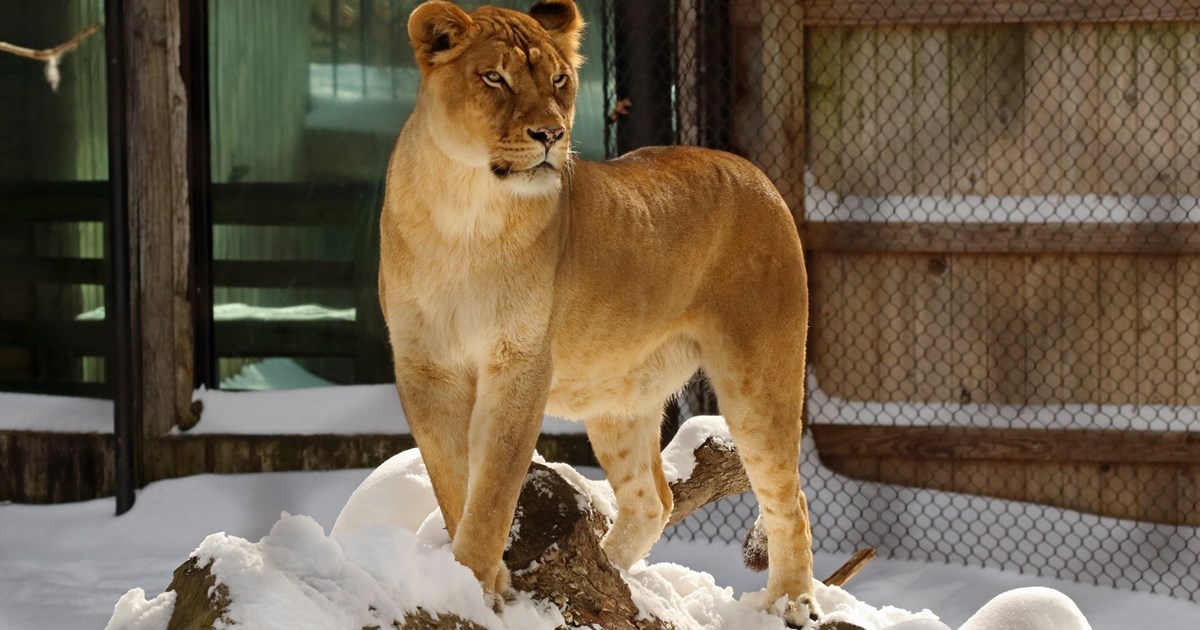
LITTLE ROCK (December 12, 2024) – As winter settles in and temperatures drop, the animals at the Little Rock Zoo are far from slowing down. While the season may bring a chill to the air, our dedicated team works hard to ensure that every animal stays comfortable, healthy, and engaged throughout the colder months. From specially designed enclosures to seasonal dietary adjustments, we make sure our animals, whether cold-loving or more temperature-sensitive, have everything they need to thrive.
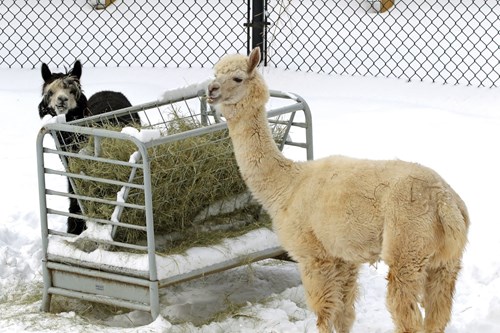
Natural Adaptations: Fur & Feathers
Some animals are naturally adapted to the winter months, growing thicker fur or feathers to keep warm. Our alpacas, for instance, are well known for their dense wool, which thickens as the weather cools. While native to South America, alpacas have adapted well to the cooler temperatures here at the Zoo, finding comfort in the crisp winter air.
Likewise, birds like the great horned owl rely on their winter plumage of dense feathers. These feathers provide excellent insulation, helping them conserve body heat as they hunt and navigate the colder season.
Behavioral Adaptations
Not all animals need to change their appearance to adapt to the cold—many adjust their behaviors to stay comfortable. For example, some animals like the Maned wolves will naturally shift their activity patterns in winter. While they are usually more active in the evening, may become more active during the day to take advantage of the sun’s warmth. We provide heated areas within their enclosures to ensure they can stay active and comfortable while being protected from the weather.
Alligators and other native reptiles, on the other hand, enter a state called brumation as temperatures drop. Similar to hibernation, their metabolism slows, and they become less active. At the Zoo, we carefully monitor their behavior, ensuring they are safe and healthy throughout the season.
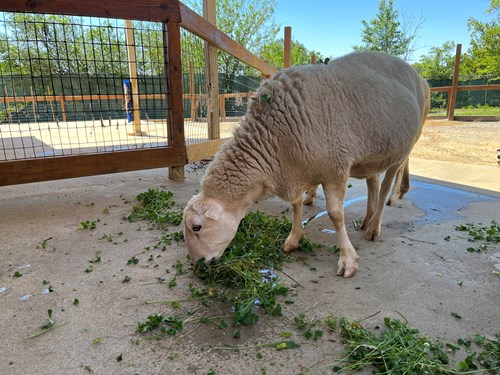
Tailored Diets for Winter Wellness
To ensure our animals get the nutrients they need during the colder months, we make several dietary adjustments. An important component of many of the animal’s diets throughout the year is browse, which includes fresh leaves, twigs, and shoots from trees and shrubs. Many of our herbivorous animals, such as primates, rhinos, and elephants, enjoy browse, which provides essential fiber and nutrients they cannot get from other foods alone.
Our team collects large quantities of browse during the warmer months and freezes it to ensure the animals continue to have access to this important food source throughout the winter. Elephants and rhinos enjoy foraging through these branches, while primates like orangutans use their dexterity to strip leaves from branches, engaging in natural behaviors that keep them active and stimulated even during the colder months.
In addition to browse, we adjust the diets of other animals as well. For example, some animals are fed extra to ensure they’re getting the essential nutrients they need to stay warm. Reptiles like alligators, whose metabolism slows in the cold, have reduced feeding frequencies to match their lower activity levels.
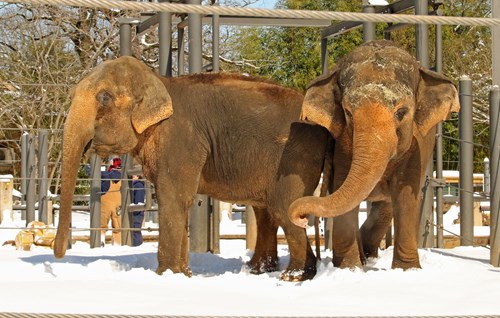
Enclosures for Every Season
To provide our animals with the best possible care year-round, we design their enclosures to meet their needs in every season, including the colder winter months. Elephants, for example, have access to heated indoor spaces where they can stay warm, while still having the option to venture outside when the weather permits. Their thick skin and large bodies offer some natural insulation, but these heated areas ensure they remain comfortable even during extreme cold.
Our farm animals, enjoy cozy barns that offer shelter from the cold, ensuring they stay comfortable during the chillier months. These barns allow them to stay warm while still having space to roam when temperatures are milder.
By creating these tailored environments, we ensure our animals have the best possible conditions to thrive, no matter the season.
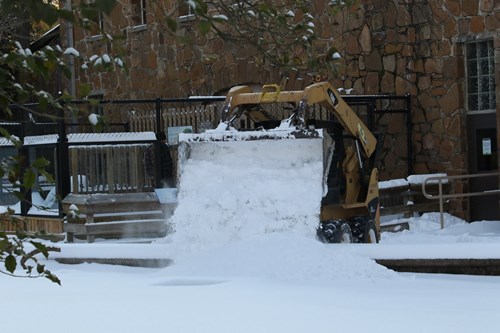
Dedicated Care Every Day
At the Little Rock Zoo, we are committed to the well-being of our animals year-round. Our dedicated animal care professionals monitor the health and behavior of each animal, ensuring they are adjusting well to the colder temperatures. Whether through dietary changes, special enclosures, or extra attention, our care team makes sure every animal is supported through the winter.
Winter at the Little Rock Zoo
While winter at the Little Rock Zoo is a bit quieter, it’s still a great time to visit. The cooler weather allows for easier animal observations as many animals remain active and can be seen exploring their enclosures. We invite you to come visit us this season and see firsthand how our animals are thriving, no matter the weather.
Photo Credits: Karen Caster
Posted by Misty Waddle on 12 Dec 2024
About the author
Misty Waddle
Misty Waddle is the Guest Services & Marketing Coordinator at the Little Rock Zoo. Edited by Joy Matlock, Zoo Development & Marketing Coordinator.



